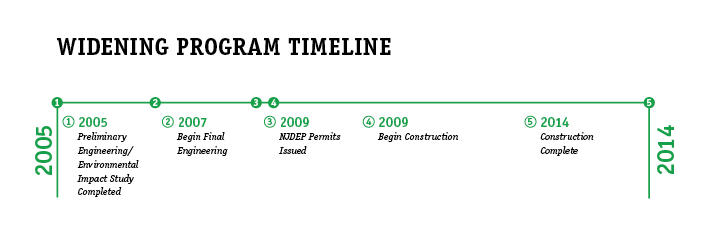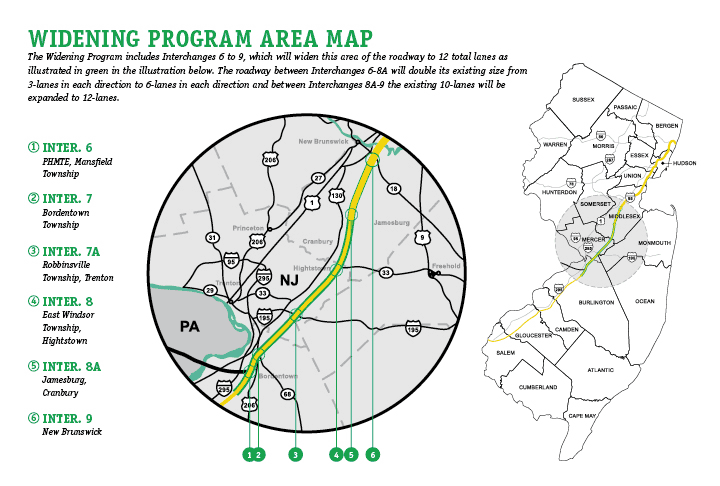Since 1970, the population of Central New Jersey has increased 32 percent and employment by 83 percent. Since 1990, as a result of this growth, traffic between Interchanges 6 and 8A has increased by 46 percent. By 2032, northbound traffic volume is expected to increase by nearly 67 percent; southbound traffic is forecasted to increase by 92 percent.
Level of Service (LOS) is a measure of traffic congestion on a roadway, with assigned ranges from A-F. A roadway with a LOS of "A" has no congestion while a LOS “F” roadway has severe congestion.
Currently, certain segments of the Turnpike between Interchanges 6 and 9 encounter a Level of Service “D” or worse. With projected significant increases in traffic, the existing Turnpike within the Widening Program's corridor would become intolerable with conditions of extreme congestion by the design year of 2032.
There are also considerations that reach beyond New Jersey. The Turnpike is a key transportation corridor between major metropolitan areas in the Northeast. It is the primary link for both commercial and non-commercial traffic between Boston, Hartford and New York City to the north, and Philadelphia, Baltimore and Washington, D.C. to the south. In addition to interstate transportation, the Turnpike serves as an intrastate transportation corridor for commuters and the movement of goods within New Jersey. The Turnpike is also a vitally important north-south evacuation route.
Thus, the expansion of this important roadway is integral to the health, safety, and welfare of the citizens of New Jersey.




